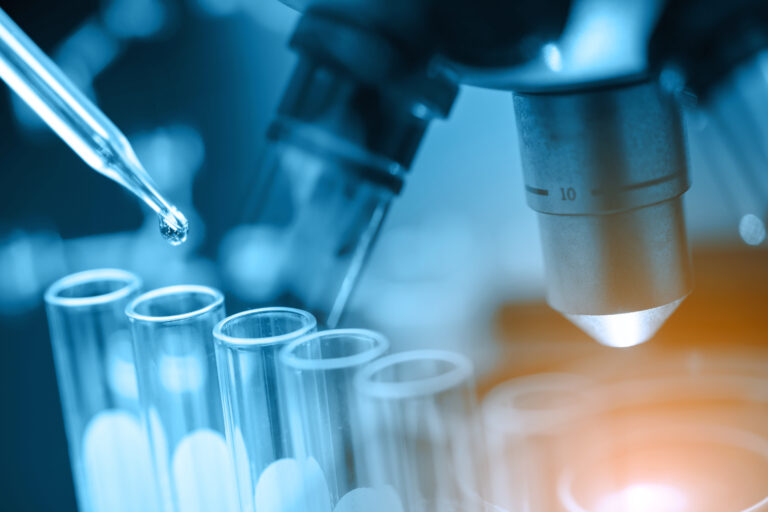Endometriosis is an inflammatory disorder, and this inflammation can lead to increased pain, fatigue, and general feelings of unwellness. Mast cells are immune system cells that can stimulate inflammation (Graziottin, Skaper, & Fusco, 2014). Mast cells hold proinflammatory substances (such as histamine, cytokines, prostaglandins, and more), and, when activated, release these proinflammatory substances (Weller, n.d.). When responding to a threat to the body and for healing, this is a good thing. But when mast cells are activated in endometriosis, not so much.
Activated mast cells (the ones that have released all those proinflammatory substances) have been found in higher quantities in endometriosis lesions versus normal tissue (Hart, 2015; Indraccolo & Barbieri, 2010; Sugamata et al., 2005). Estrogen seems to stimulate mast cells to support the inflammatory process (Zhu et al., 2018). In fact, estrogen receptors are found on mast cells and the high local levels of estrogen from endometriotic lesions may activate the mast cells and lead to pain (Hart, 2015; Zhu et al., 2018). While many therapies for endometriosis involve lowering estrogen production by the feedback loop between the brain and the ovaries, it should be remembered that endometriosis lesions demonstrate production of estrogen themselves (and also show resistance to progesterone) (Delvoux et al., 2009). In fact, the level of estrogen in endometriosis lesions were related to pain symptoms in patients with endometriosis while blood levels of estrogen were not (Zhu et al., 2018).
In addition, nerve fibers in endometriosis lesions have been shown to “release neural peptides such as nerve growth factor and substance P” that in turn activate mast cells to release those proinflammatory substances “which contributes to the development of pain and hyperalgesia in patients with endometriosis” (Zhu & Zhang, 2013). Those granules released by mast cells can contribute to new blood vessel growth, more inflammation, and nerve growth, which can lead to pain (Graziottin, 2009). This persistent inflammation from endometriosis lesions “intensifies neurogenic inflammation and tissue damage” leading to “progressive functional and anatomic damage associated with prominent tissue scarring, exemplified by the natural history of endometriosis” and “up-regulation of nerve pain” (Graziottin, 2009).
So, mast cells are recruited to endometriosis lesions, respond to the higher local estrogen and other inflammatory conditions, release their proinflammatory substances which can lead to pain and scarring. This effect of mast cells is associated in other pain syndromes as well, such as interstitial cystitis, IBS, vulvodynia, complex regional pain syndrome, migraines, and fibromyalgia (Aich et al., 2015).
References
Aich, A., Afrin, L. B., & Gupta, K. (2015). Mast cell-mediated mechanisms of nociception. International journal of molecular sciences, 16(12), 29069-29092. Retrieved from https://doi.org/10.3390/ijms161226151
Delvoux, B., Groothuis, P., D’Hooghe, T., Kyama, C., Dunselman, G., & Romano, A. (2009). Increased production of 17β-estradiol in endometriosis lesions is the result of impaired metabolism. The Journal of Clinical Endocrinology & Metabolism, 94(3), 876-883. Retrieved from https://academic.oup.com/jcem/article/94/3/876/2596530
Graziottin, A., Skaper, S. D., & Fusco, M. (2014). Mast cells in chronic inflammation, pelvic pain and depression in women. Gynecological Endocrinology, 30(7), 472-477. Retrieved from https://www.tandfonline.com/doi/abs/10.3109/09513590.2014.911280
Graziottin, A. (2009). Mast cells and their role in sexual pain disorders. Female Sexual Pain Disorders, 176. Retrieved from https://www.fondazionegraziottin.org/ew/ew_articolo/1820%20-%20mast%20cells%20and%20SPD.pdf
Hart, D. A. (2015). Curbing inflammation in multiple sclerosis and endometriosis: should mast cells be targeted?. International journal of inflammation, 2015. Retrieved from https://www.hindawi.com/journals/iji/2015/452095/
Indraccolo, U., & Barbieri, F. (2010). Effect of palmitoylethanolamide–polydatin combination on chronic pelvic pain associated with endometriosis: Preliminary observations. European Journal of Obstetrics & Gynecology and Reproductive Biology, 150(1), 76-79. Retrieved from https://www.sciencedirect.com/science/article/abs/pii/S0301211510000424
Sugamata, M., Ihara, T., & Uchiide, I. (2005). Increase of activated mast cells in human endometriosis. American journal of reproductive immunology, 53(3), 120-125. Retrieved from https://doi.org/10.1111/j.1600-0897.2005.00254.x
Weller, C. (n.d.). Mast cells. Retrieved from https://www.immunology.org/public-information/bitesized-immunology/cells/mast-cells
Zhu, T. H., Ding, S. J., Li, T. T., Zhu, L. B., Huang, X. F., & Zhang, X. M. (2018). Estrogen is an important mediator of mast cell activation in ovarian endometriomas. Reproduction, 155(1), 73-83. Retrieved from https://doi.org/10.1530/REP-17-0457
Zhu, L., & Zhang, X. (2013). Research advances on the role of mast cells in pelvic pain of endometriosis. Journal of Zhejiang University (Medical Science), 42(4), 461. DOI: 10.3785/j.issn.1008-9292.2013.04.015

